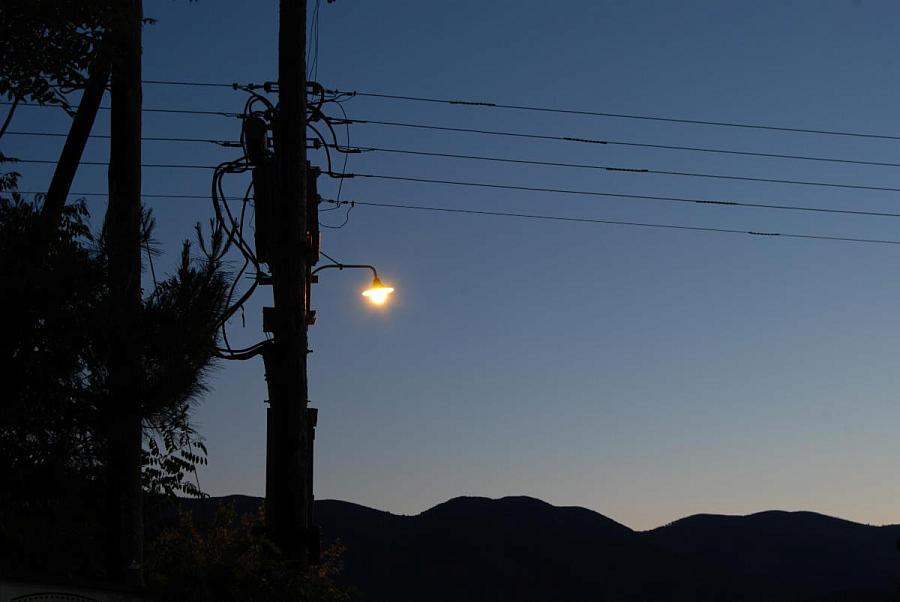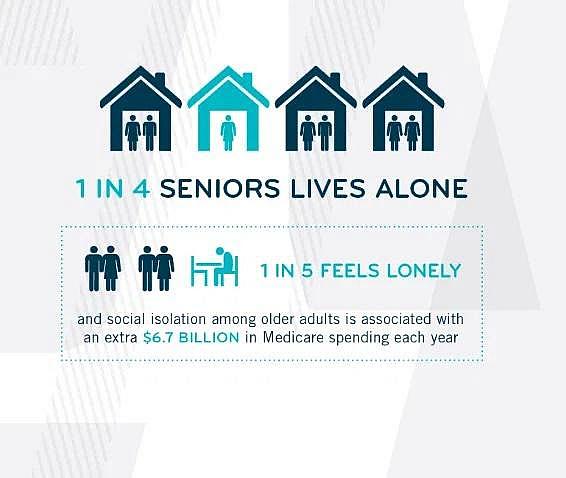The Health Divide: A growing number of Black seniors are living alone, a hazard for their health

(Photo by Slavcho Ivanov via Creative Commons)
My grandmother, Ruth Anderson, was a single mother raising my dad before she met Orelious Pinkney while shopping downtown in Gloster, Mississippi.
Pinkney courted my grandmother for less than a month before he asked for her hand in marriage. He called it love at first sight. They got married, in the living room of the home my grandfather built, on March 10, 1943.
The couple remained married until my grandfather passed away from prostate cancer on May 25, 2001. During their 58 years of marriage, the longest they were ever apart from each other was a week when my grandfather came to Milwaukee for my elementary school graduation.
At the time of my grandfather's passing, my grandmother was in good physical health. She drove her husband to doctors’ appointments and ran a small store on their farm, where she sold butter, eggs, fruits, vegetables, beef, and pork.
A week after my grandfather died, my parents asked my grandmother to move to Wisconsin so she wouldn't be alone. My grandmother refused. Two months later, she was rushed to Jackson Memorial Hospital.
When we arrived at the hospital, my grandmother told us she was not in any pain and that she was ready to go home, but not the Mississippi home she had shared with my grandfather. She was prepared to die.
She died two days later.
In the 1940s, when my grandparents married, only 8% of Americans lived alone. Today, that number is nearly 30%, a record high.
Scholars argue that living alone signifies a passing trend and a profound societal transformation. Regrettably, elderly African Americans who reside in solitary conditions exhibit poorer health outcomes compared to their white counterparts under similar circumstances.
The risks of social isolation depend not only on who you are but where you live
The number of single-person households in the United States has grown substantially, increasing from just over 13% of American households in 1960 to about 28% in 2022, according to U.S. Census data.
Elderly people residing in solitary conditions have elevated mortality rates attributable to social isolation, feelings of solitude, and difficulty getting urgent assistance. For instance, in my ZIP code, 35.7% of the population 65 and above reside alone.
In addition, more than half of U.S. households were childless in 2022.

Loneliness can harm the body by releasing excess stress hormones and increasing blood pressure, heart rate, and blood sugar levels.
To combat social isolation among African American older adults, the National Caucus and Center on Black Aging (NCBA) urged them to use social media platforms such as Twitter, Instagram and Facebook to create a sense of community, share information, and stay engaged.
While social media may help folks remain engaged, it’s not the same as being around real people, according to Eric Klinenberg, a sociologist at New York University and author of the book “Going Solo: The Extraordinary Rise and Surprising Appeal of Living Alone.”
Klinenberg called living single one of the most significant demographic changes in the last century — one that we’ve failed to recognize and take seriously. He first started exploring the topic of people living alone after researching the deaths of 700 people during a heat wave in Chicago in 1995. The reason why so many people died was because they lived alone, leaving them without help amid the sweltering heat and humidity. Many of those who died alone were Black and elderly. After the Chicago heat wave, Klinenberg conducted fieldwork to investigate the factors influencing the death risk.
He found that low-income neighborhoods with robust social support systems — high residential density, bustling sidewalks, active businesses, well-maintained public areas, and community organizations — had lower fatalities. In contrast, low-income areas with weaker social infrastructure experienced the highest mortality rates in the city.
For decades, African American neighborhoods faced an exodus of employers, businesses, and residents. This mass departure has posed considerable challenges to sustaining crucial social support systems within these communities.
“Most of us probably think of loneliness as just a bad feeling. It turns out that loneliness has far greater implications for our health when we struggle with social disconnection, loneliness, or isolation,” Murthy told USA Today in a 2023 interview.
Black men face limited options when dealing with loneliness
Men are recognized for internalizing many issues and are reluctant to open up or share their feelings. This unwillingness to express themselves and seek support can lead to loneliness and potentially impact their mental and physical health. Men often don't have enough opportunities to have these conversations, so they often suffer in silence.

